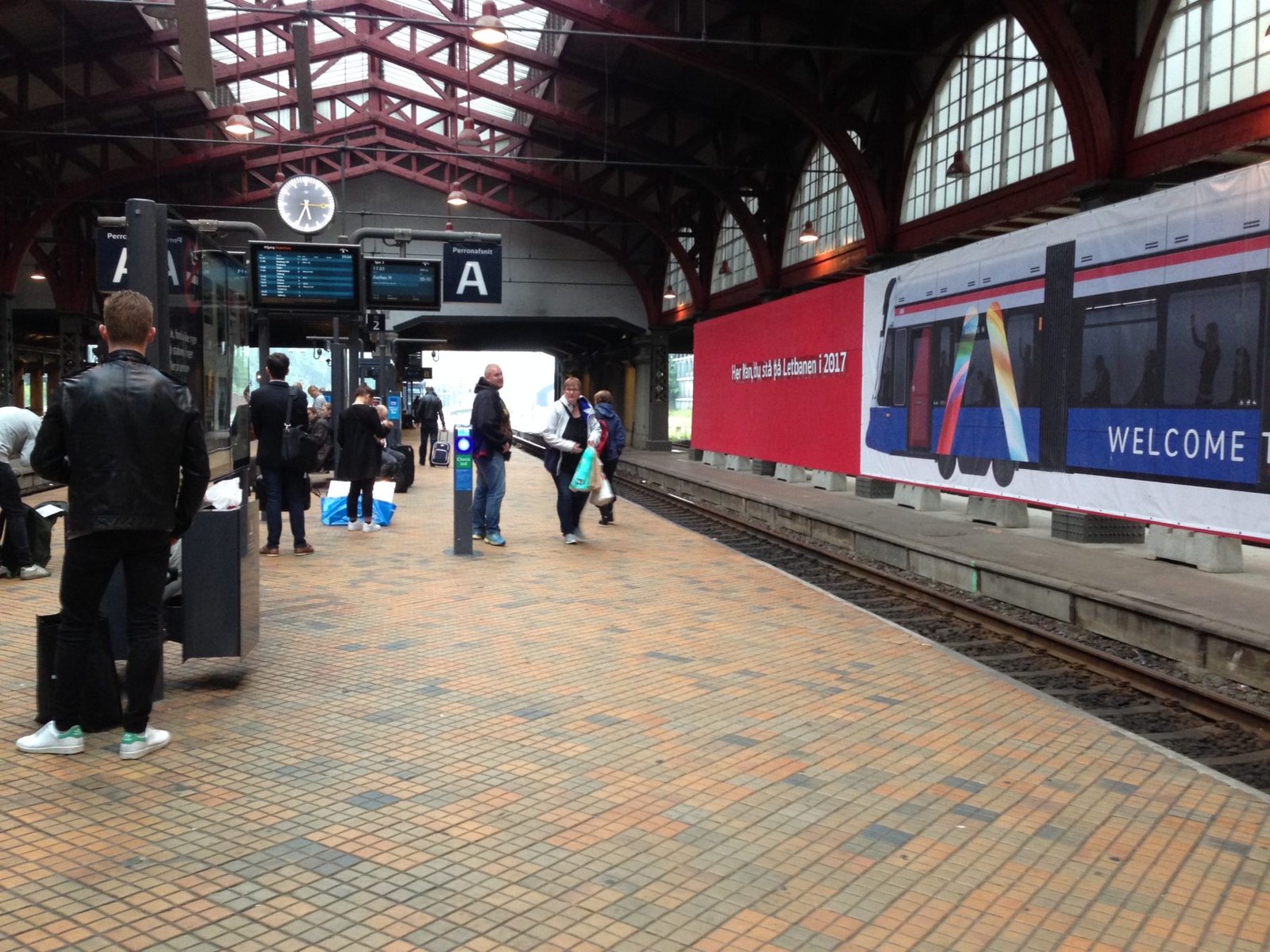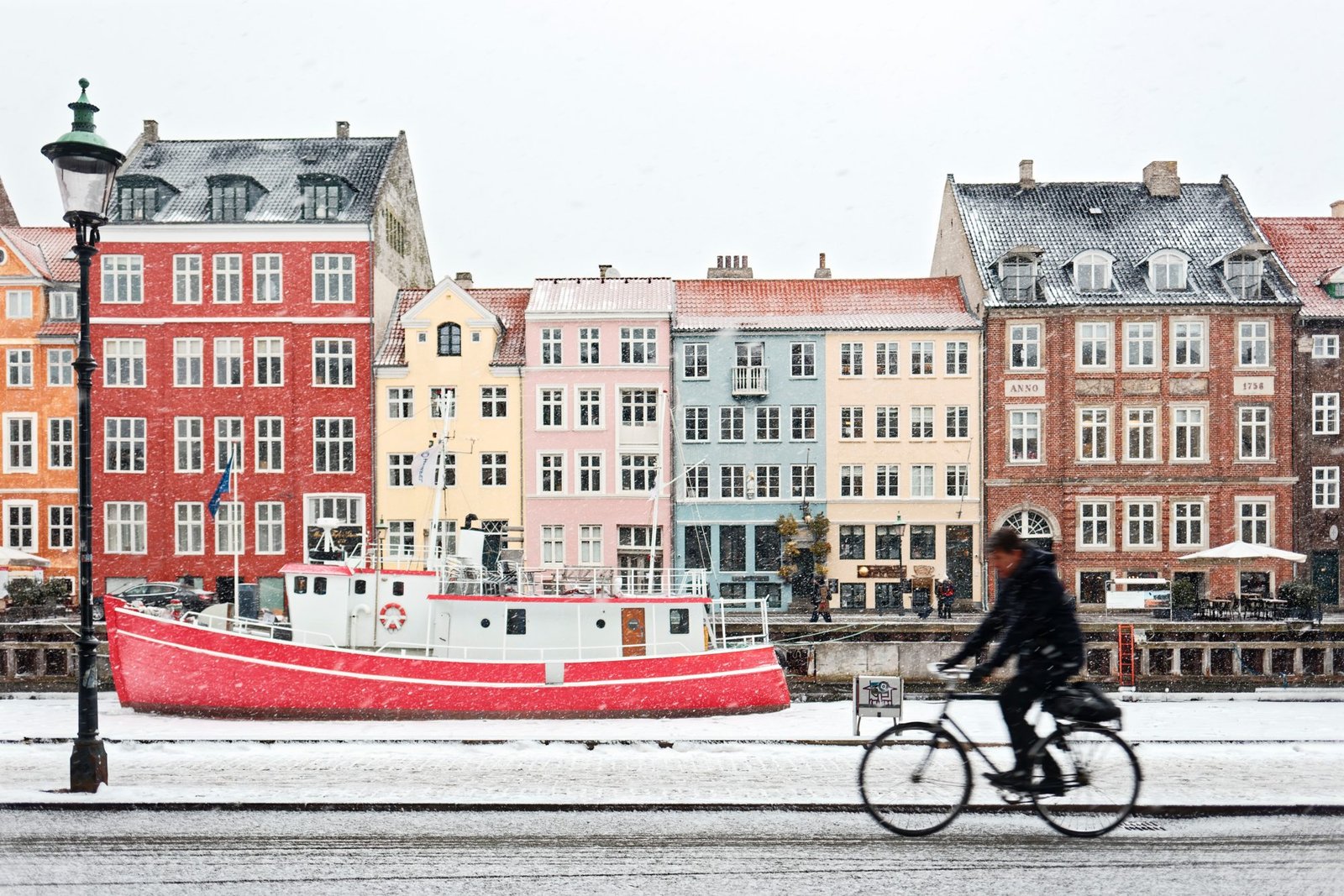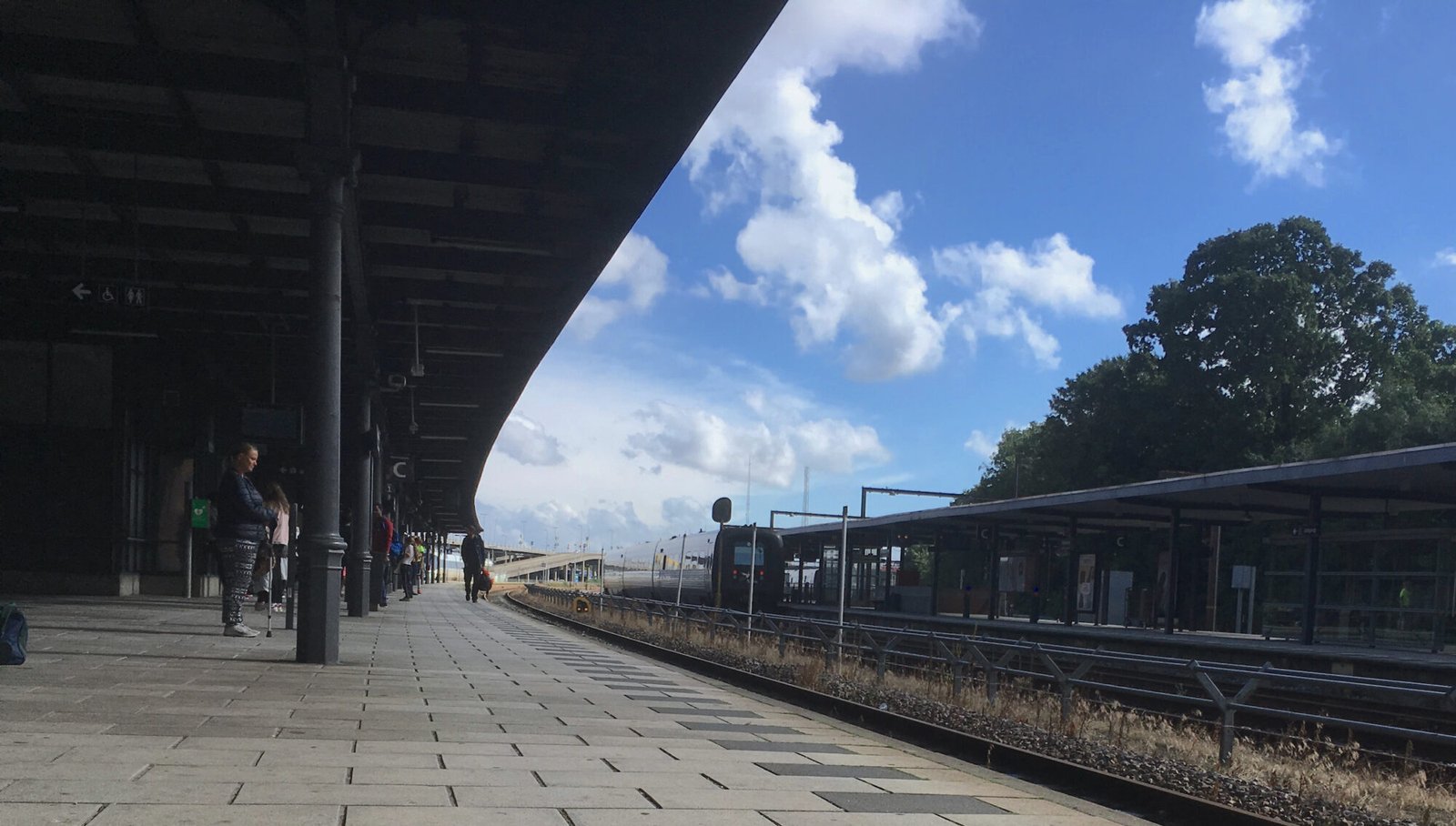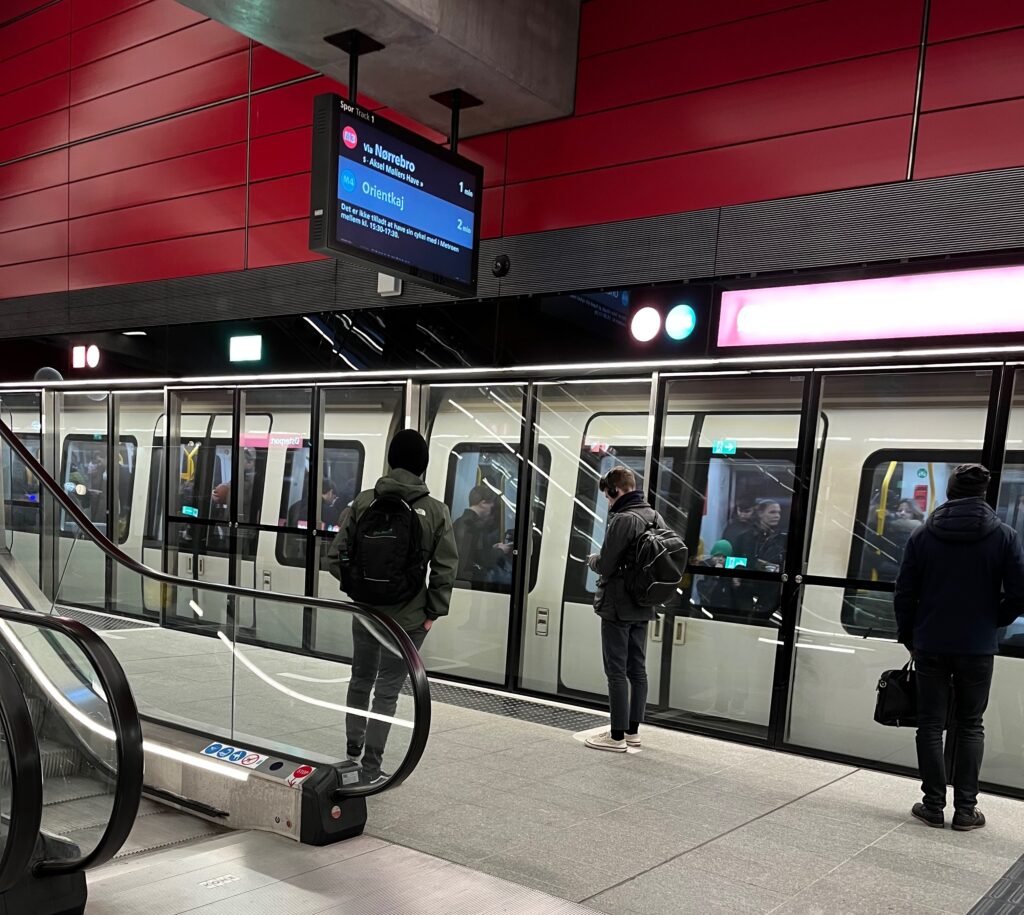
Copenhagen offers some fine public transportation options. The urban and suburban trains (S-tog) are usually the most popular, but Copenhagen also has a modern metro and several buses driving around the city.
Here’s a full guide to public transport in Copenhagen. We will look into the different types of transport, where you can go, how long they run, and what it costs. It should make your trip easier in a variety of ways!
Contents
Urban trains in Copenhagen
S-trains. Arguably the most popular transportation method in Copenhagen and its surrounding suburbs.
A lot of people travel with urban rail, known locally as S-Tog – and in many cases, it also makes sense as a traveler.
If you take the S-Tog, you can reach almost any location in central Copenhagen, as well as the outskirts of the city. It covers way more than the metro does, although there are longer waiting times between departures.
This network allows you to stay in any area of Copenhagen and still get around the city easily. We recommend that you stay at a central location, though. Read our guide on where to stay in Copenhagen for more info.
Check out the map of the S-Tog here:
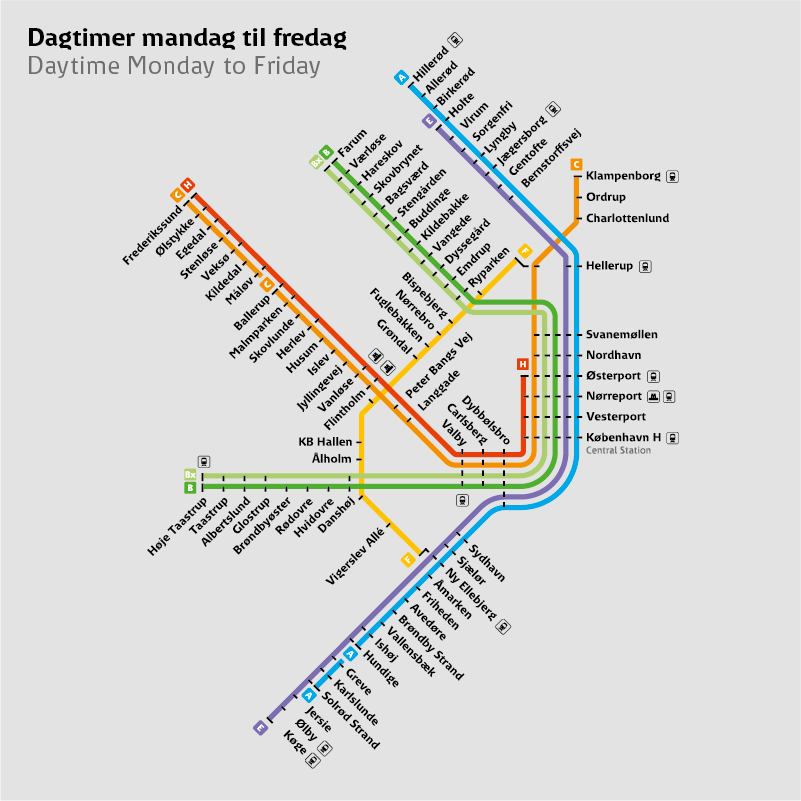
These city trains operate during all daytime hours from Monday to Sunday. They also operate all night between Friday and Saturday, and between Saturday and Sunday. Very convenient!
The price will depend on how far you need to go. A short ride of two zones will cost 24 DKK ($3.50) while a long ride of eight zones will cost 84 DKK ($11.50). How do you find out how many zones you need to travel? Just type in your destination on the screen as you buy your ticket!
You can buy a ticket at each station. Or you can buy a travel pass for several days. Continue reading this article for information about how to get a travel pass.
Copenhagen Metro
The Copenhagen Metro is fairly small, yet efficient. It is very modern and had some recent developments, going from two to four different lines not too long ago.
The subway covers the most central areas of Copenhagen. It is one of the preferred ways to go from the airport to the city center.
Lines 1 and 2 go from west to southeast, passing the city center along the way. Line 2 is the airport line, so you might be using that if you are flying in or out of Copenhagen and using the metro as transportation. Line 3 is a circular route passing through some of the most important areas of the city. Line 4 goes from the central train station to the northeast of the city.
The subway is not necessarily the best way of transport in Copenhagen (because it doesn’t cover as much ground as the S-trains). But it is still useful in many ways. The metro is super fast and always works well – and it covers the most central and important areas.
Here is a map of the Copenhagen Metro system:
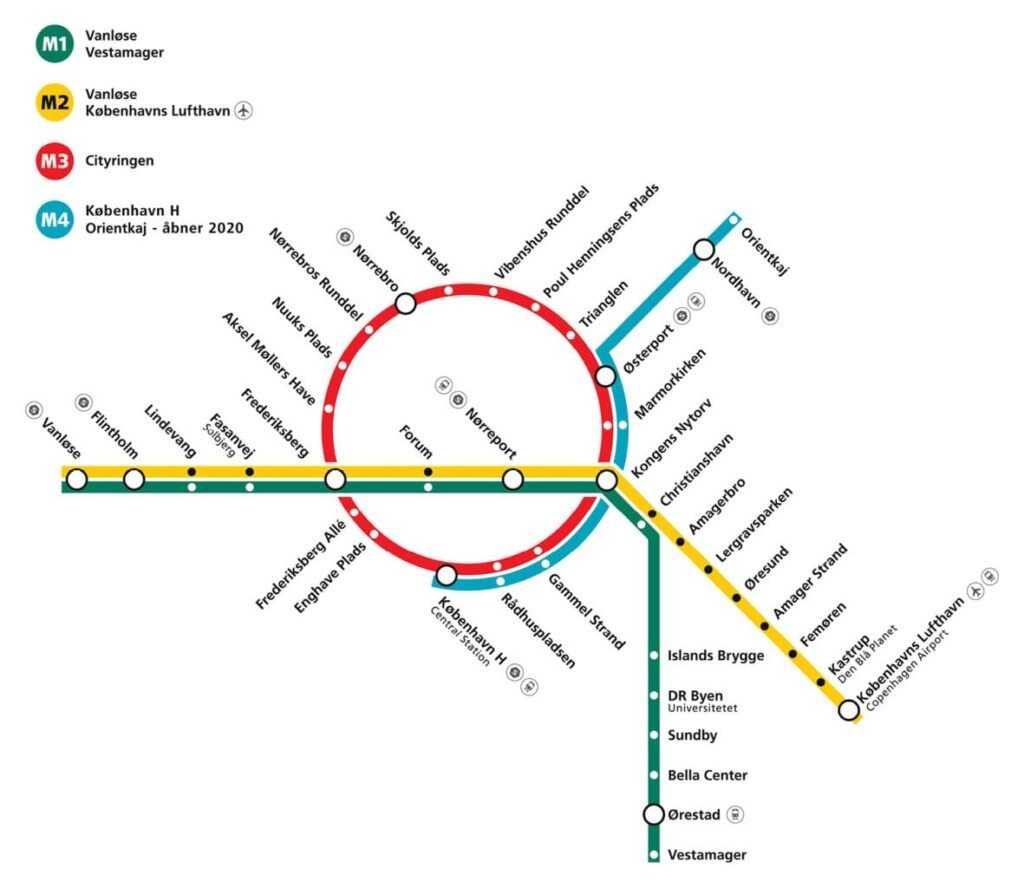
In other words, it makes sense to take the metro if you are traveling between specific areas in the center – and you want to travel as quickly as possible. For longer distances though, take the S-train.
You can buy tickets at any station. Pay by card or coins. Or you can use your prepaid travel pass (scroll down for more information on this).
A standard ticket, covering two zones, costs 24 DKK (roughly $3.50). Two zones cover most of central Copenhagen and the ticket will last for 1 hour and 15 minutes. However, a ticket from the airport to the center requires three zones, so it’s priced at 36 DKK ($5).
Buses in Copenhagen

Copenhagen has a lot of buses, and they work well. The local buses cover most areas of the city. You can also find buses that drive to other Danish towns and cities – obviously.
When you find a bus, simply get on it. We recommend that you buy a ticket on your phone before entering, or that you obtain a travel pass. If you want to pay for a single ticket, buy it on the bus – although it will be slightly more expensive than if you have a pass.
Some buses have machines inside where you can buy your ticket. Other buses require you to buy it from the driver. If you’re unsure, just ask the driver or a passenger about how to buy a ticket for that particular bus.
Buses in Copenhagen are yellow and very visible. You can find route plans at any bus stop, or you can browse them online. It’s also possible to ask a bus driver for information if you are lost – most of them speak English quite well!
City Pass
It can be a good idea to get the City Pass – at least if you are coming to Copenhagen and plan to use public transportation a lot.
With the City Pass, you get unlimited access to all forms of transportation in Copenhagen. You can decide how long you want the pass to be active. The smallest amount of time is 24 hours, while the highest is 120 hours. So it’s perfect if you are going on a trip. When you have the City Pass, you don’t need to worry about any public transport. You can use all the most popular options: Buses, trains and metro as long as it is within zones 1, 2, 3 and 4.
There are two types of City Passes – the City Pass Small which covers central Copenhagen city and the airport (zones 1-4), and the City Pass Large which covers the entire capital region (zones 1-99)
Prices start at 80 DKK for adults and at 40 DKK for children under the age of 15. Those are the prices for “City Pass Small” for 24 hours. Again, the more time you want it, the more expensive it will be. The ‘Large’ pass obviously costs more than the ‘Small’ but for most tourists, the City Pass Small will be sufficient.
You can buy it at the airport, or you can book it online.
Copenhagen Card
While the City Pass is great if you only intend to use it for transportation – the Copenhagen Card goes a step further.
With this card, you also get access to all the transportation methods, and on top of that, it gives you free entry to 86 attractions and museums in Copenhagen. The card also gives you discounts at certain restaurants.
But because it provides such high value, the Copenhagen Card is also a bit more expensive than the City Pass. Prices start at 439 DKK ($60).
Check the website of the Copenhagen Card here for specific information.
Rejsekort – If you live in Denmark
If you are not only going to Denmark on a trip, but if you are actually moving there, either short term or permanently, it makes sense to get the Rejsekort.
You can only get it if you have a permanent address in Denmark. And if you do, this card has a lot of benefits. So if you’re planning to work in Copenhagen, or if you are an exchange student staying for a semester or a full year, get this card!
It is a travel card that you can use for all transportation methods – bus, train, metro, and so on. Not only in Copenhagen but actually in all of Denmark.
You use the Rejsekort to check in and check out on every trip you make. It gives you a discount from the beginning, making it cheaper than regular tickets. And the more you use your Rejsekort – the cheaper it becomes!
The size is similar to a credit card. You hold it up to a blue scanner to check in and out of a transportation vehicle. On buses, it will often be inside the bus. On trains, you typically have to ‘beep’ your card at the blue scanner at the station.
Conclusion
Public transport in Copenhagen is quite simple and straightforward. At any given time, you can find a way to get to where you want.
It can be expensive, and that’s the only downside. So if you are traveling to Copenhagen, it’s a good idea to put money aside for transportation. The center of Copenhagen is very walkable, but most visitors end up using public transportation at least a couple of times.
We hope this article was useful to you – let us know if you have any comments, questions, or additions that would benefit other readers.

